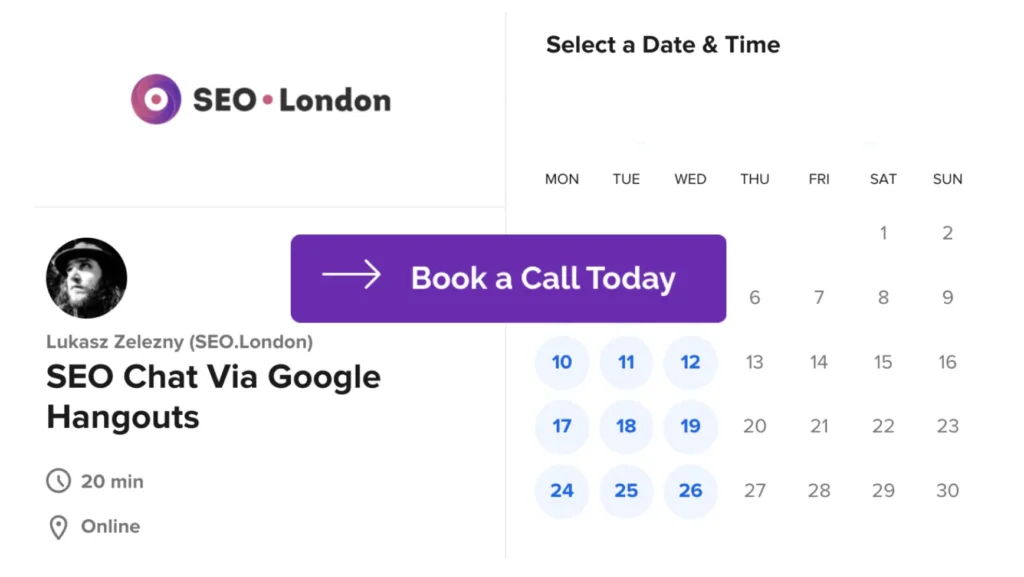Within the digital marketplace, just as in a dense forest, visibility is everything. When delving into online selling platforms like Amazon, suddenly you’re no longer alone within this mass of sellers but another participant battling fiercely to claim your place at the top. This makes it vital for any serious seller to not only understand SEO for Amazon but master the strategies that can optimize listings and bring about unprecedented success.
Understanding SEO for Amazon: An Introduction
You cannot have a complete grasp of e-commerce without executing effective Search Engine Optimization (SEO) on your product listings. However, unveiling more layers amazon search engine reveals a broader sphere altogether in the form of “SEO for Amazon.” Being unique from other search engines, applying standard SEO strategies won’t fully deliver desired results on this massive platform. The idiosyncrasies necessitate strategic optimization—a roadmap bespoke to conquering this vast terrain laden with algorithms and keywords.
Increase your online presence with Lukasz Zelezny, an SEO Consultant with over 20 years experience — schedule a meeting now.

The Significance of Amazon SEO for Sellers
Imagine being an author who’s written a masterpiece, yet fails to land on bookstore shelves or stand prominently within sight. Quite disheartening! Precisely so for an online seller who has exceptional merchandise but struggles with visibility within an ocean of options presented by Amazon—to nearly 197 million people each month!
Amazon commands an elephantine share of ecommerce traffic—49% according to statistics—it’s thus prudent that sellers wield the power of effective Amazon SEO strategies. This approach increases their product’s visibility amongst potential buyers and consequently propels sales performance upwardly—an essential factor influencing rankings.
Overview of Amazon’s A9 and A10 Algorithms
Delving deeper into understanding how it all works under the hood will take us face-to-face with two pivotal players – the enigmatic duo: A9 and A10 algorithms. Dare I say they are like gatekeepers overseeing which products get a ticketed pass onto customers’ coveted first page view.
Amazon’s A9 algorithm, archaic yet potent, was primarily influenced by keywords, search volume and sales performance. Transitioning to its more advanced successor – the A10 algorithm – broadened the focus terrain. Now, factors like price competitiveness, product availability, delivery speed amongst many others also feature in determining a product’s ranking.
Bringing Amazon SEO strategies up to par with these ever-evolving algorithms can ultimately pave your way towards a grand entry on page one—an oasis of visibility within this vast ecommerce desert. The succeeding segments will unfold the secrets behind optimizing your Amazon listings effectively and harnessing backend SEO elements! Prepare for an exciting journey in mastering SEO for Amazon!
Key Factors Influencing Amazon Product Rankings
Given the numerous sellers and millions of products available on Amazon, earning a prominent position in search results can be challenging. However, by taking into consideration key factors that influence product rankings, you’ll be closer to mastering SEO for Amazon.
The Critical Role of Keywords in Amazon SEO
Firstly, let’s delve into the crucial element – keywords. You’ve probably heard it over and again, but I cannot emphasize enough how pivotal a role keywords play in SEO for Amazon. Picture these as keys which open doors to visibility on the platform.
Get More Customers Online with Lukasz Zelezny, an SEO Consultant with over 20 years experience — schedule a meeting now.

Keyword Selection: This involves identifying words or phrases buyers will likely use when searching for your products. Utilize tools like Sonar, Scientific Seller or Helium10 to reveal compelling high-volume keywords relevant to your products.
Keyword Placement: Once you have your list of powerful keywords ready, place them strategically across various sections of your listing such as title, bullet points, product description and backend search terms.
What to ask an SEO Consultant
By diligently executing keyword research and optimization, you directly enhance discoverability—a significant step towards successful Amazon selling!
How Sales Performance Influences Rankings
Moving on from keywords, another influential factor is your sales performance. Impressively high levels of sales velocity positively affect rankings. Simply put—more you rank higher sales equals higher listings!
But there’s more than just quantities sold here! Both conversion rate, which is the percentage of visitors who end up purchasing from your listing; and sales history, capturing consistent long term sales success are also vital considerations.
Strive to improve these aspects proactively through persuasive listing content and competitive pricing strategies—an integral part of ensuring good sale rates.
In essence—if you want improved visibility on Amazon– ensure better sales!
The Importance of Customer Reviews and Ratings
Last but not least comes an ever-important aspect which most fail to realize—the power of customer reviews & ratings!
Reviews serve as testament to user satisfaction and healthy seller-customer interaction, lending credibility to your product’s quality assertion.
Highly-rated products with plenty of other positive reviews can verification trigger Amazon’s algorithms to deem the item as appealing and worthy leading to improved rankings.
So, encourage satisfied customers but also take note of critical reviews and use it for corrective measures! At the end of the day, champions of customer service stand to win!
Winning at SEO for Amazon ultimately comes down to mastering these elements— keywords optimization; ensuring high sales volume & consistency; and cultivating stellar customer reviews. Remember, just like success does not happen overnight, neither does SEO—it is an ongoing process that pays off well when invested in rightly.
Optimising Your Amazon Product Listings for Maximum Visibility
Effective SEO for Amazon requires optimising your product listings to improve visibility and conversions. This compelling task begins with keyword research, moves onto crafting powerful titles, interesting descriptions, bullet points targeting relevant search terms and intent, and even the use of high-quality images and A+ Content.
Mastering Keyword Research: Tools and Techniques
Perfecting the art of keyword research is a critical step in Amazon SEO. It’s essential to understand what your potential customers are searching for and apply those phrases effectively in your content.
There are multiple tools available that you can utilise for keyword research:
- Freebase Amazon Keyword Tool helps estimate search volumes.
- Scientific Seller identifies long-tail keywords.
- Sonar by Sellics offers data-driven insights about which keywords work best for specific products.
Strategies such as competitor analysis can also bring valuable results. By investigating similar successful listings on Amazon, you may uncover popular high-ranking keywords relevant to your own products.
Crafting Compelling Product Titles that Rank and Convert
Product titles significantly impact how well your listing ranks on Amazon’s search result pages – they’re breeding grounds for top-priority keywords!
The angle here is twofold: implementing strategic SEO while enticing shoppers towards purchase with an engaging title.
Your listing should clearly describe the product as concisely as possible without sacrificing informative accuracy – think brand name, product type model number, colour or size– all within 200 characters max! Each word presents an opportunity to integrate crucial keywords seamlessly; just remember not to compromise readability in the process.
Writing Product Descriptions and Bullet Points with Search Intent in Mind
Product Descriptions and Bullet Points are pivotal elements where you get the chance not only to influence the customer purchase decision but also infuse additional target keywords for better ranking (hence visibility) on your ‘SEO for Amazon’ quest.
Bullet Points highlight key features of your product; they must be sharp, clear, and informative. Place the most important features at the beginning and end – as consumers typically notice these parts more.
In product descriptions, aim towards answering any potential questions that may linger in a buyer’s mind after reading your bullet points. Think rich details and compelling storytelling.
Enhancing Your Listing with High-Quality Images and A+ Content
Images play a crucial role in enticing prospective buyers to make purchases while contributing positively towards SEO for Amazon – indeed, quality images can reduce bounce rates on your listing!
Amazon recommends having at least six images per listing – primary image on a white background, close-ups showing valuable features or textures, lifestyle shots demonstrating use-cases or applications of the product, and perhaps variant-specific images (for colour/size variations etc.).
Also obtainable exclusively by brand registered sellers is an A+ content feature (formerly Enhanced Brand Content). This allows adding high-quality photos, showcasing additional text placements along with comparison charts relevant and complete information within your description. It provides you extra room not just for creative eCommerce merchandising but also for inserting those vast keyword options discovered earlier! Invest time in understanding how influential these elements are when applying SEO strategies for Amazon. Individually each component is powerful; collectively they pave the way towards creating listings imbued with maximum visibility!
Advanced Strategies to Boost Your Product’s Performance on Amazon
Optimizing your Amazon listing is one step towards e-commerce success. However, the journey doesn’t stop there. This section aims to present some advanced strategies that you can utilize to further boost your own product page’s performance on the platform.
Pricing Strategies to Enhance Competitiveness and Attractiveness
In a dynamic marketplace like Amazon, where multiple sellers may be offering very similar products, your pricing strategy can significantly enhance competitiveness and attractiveness. These tactics are crucial in implementing SEO for Amazon effectively:
- Competitive Pricing: First off, consider keeping your prices competitive with other vendors selling identical or comparable items. An overpriced product could deter potential buyers.
- Psychological Pricing: According to a study by the National Institutes of Health (NIH), consumers respond better to prices ending in .99 than round figures. So, $19.99 seems more attractive than $20!
- Volume Discount Strategy: Encouraging customers to buy more units with monetary benefits significantly enhances sales velocity – which positively impacts your search rankings on Amazon.
Leveraging Amazon Sponsored Products for Increased Visibility
Another potent strategy when dealing with SEO for Amazon is leveraging sponsored products for increased visibility. Sponsored product ads are cost-per-click (CPC) advertisements displayed within customer searches and on product pages. Because they appear at critical points in the shopping process, these ads can significantly elevate product visibility while influencing purchasing decisions.
Here, I would suggest two things: Firstly, targeting relevant keywords because sponsored products work similarly to pay-per-click advertising; Second, ensuring you have an optimized listing before starting as click-through rates will be higher if descriptions and images are compelling and informative.
Employing FBA to Improve Customer Trust and Conversion Rates
Fulfillment by Amazon (FBA) allows sellers to store their products in Amazon’s fulfillment centers from where it gets picked up, packed, and shipped on behalf of the seller. A key advantage of FBA is the trust that comes with it for customers – Amazon handles delivery, customer service, and returns.
Using FBA also means your products are eligible for Amazon Prime, which has a user-base of over 200 million subscribers worldwide. With this exponentially large audience preferring products under Prime due to faster delivery times, employing FBA can drastically boost your sales and conversion rates.
Henceforth, strategically leveraging advanced strategies specifically tailored to operating on an ever-changing platform like Amazon can substantially enhance product performance. Remember; adaptability alongside continuous improvement keeps you ahead in this game!
Harnessing the Power of Backend SEO Elements on Amazon
Backend SEO is often seen as an esoteric domain – one that is difficult to fathom and master. However, it plays a pivotal role in improving your listing’s visibility, thereby boosting sales on the Amazon platform. By focusing not just on what customers see but also how Amazon perceives your product, you increase your opportunity to nab that much-coveted top spot.
The Significance of Backend Keywords in Amazon SEO
What are backend keywords and why should you care about them? Simply put, they are unseen yet insightful text strings submitted with other product details when creating or modifying an item listing. They give Amazon’s algo-bots more context about your product and improve its ability to match customer search queries precisely.
It’s important to note that these hidden keywords don’t appear directly in the product description or any part of the visible listing. This lack of visibility doesn’t mean they’re less essential though! On the contrary, by using accurate backend keywords, my previous clients have significantly amplified their chance for improved search results ranking without congesting their public-facing content.
Algorithms employed by marketplace giants like Amazon prioritize relevancy over every other attribute while delivering search results. This is exactly where hidden-backend tags help you out – making sure your product ticks all marks when it comes to relevance without stuffing keyword data into consumer-facing parts of your listings.
Tips for Utilising Backend Search Terms Effectively
When optimizing backend SEO elements, aim for excellence rather than perfection. It isn’t merely a tick-box exercise but a potent tool demanding fine-tuned manipulation based on best practices. Here are practical tips drawn from my industry experience:
- Mindfully Select Keywords: Try picking seed words around which related terms can be anchored logically. It magnifies the chances of getting discovered when users punch-in different combinations.
- Avoid Keyword Stuffing: Remember there’s a difference between maximum utilization and keyword stuffing. Keep it organic and don’t duplicate words to maintain the integrity of your listing.
- Be Specific: Broad terms can attract lots of irrelevant traffic, whilst neglecting specifics may render you invisible to potential customers. Balance is crucial here – Use generic terms but pepper them with specific ones too!
- Don’t Misspell Purposefully: Back in the day, these conscious errors were a go-to trick for many online merchants. However, Amazon algorithms have evolved beyond a doubt now; they autocorrect individual search queries naturally.
Adopting best practices around backend SEO will not only polish your proficiency in ‘SEO for Amazon’ but also gear your listings towards improved discoverability. Over time, twining these techniques hand-in-hand with other parts of Amazon SEO helps create an omnipresent brand on this immense ecommerce platform.
Remember that every small improvement increases advantage over competitors who haven’t fine-tuned their own listings yet – setting up a golden opportunity for you to outrank them!
Navigating Amazon’s Choice: Strategies to Achieve the Badge for Your Products
The highly-coveted ‘Amazon’s Choice’ badge represents a notable achievement in SEO for Amazon. This small, yet powerful piece of endorsement not only signals consumer trust but is also believed to have significant bearing on product rankings within Amazon’s search algorithm.
What is the Amazon’s Choice Badge?
Simply put, an Amazon’s Choice badge marks particular products as highly recommended goods within their respective categories. It essentially designates these items as top picks by factoring in price, customer ratings, shipping speed, and more. However, the algorithm behind this selection remains largely undisclosed by the retail giant.
How to Secure the Amazon’s Choice Badge for Your Product
Securing a coveted spot as an ‘Amazon’s choice’ product involves optimizing several facets of your listing. While there are no specific set rules provided by Amazon about earning this badge, industry experts suggest focusing on:
- Optimizing Product Listings: Ensure your titles, descriptions, bullet points and backend keywords are optimized adequately.
- Boosting Sales Performance: Including maintaining a high sales velocity and reducing order defect rate.
- Improving Customer Experience: Encourage quality reviews and ratings while minimising returns.
- Meeting Fulfilment Requirements: Deliver orders efficiently and promptly using methods like Fulfilled By Amazon (FBA).
Remember though that even after achieving this milestone in SEO for Amazon marketplace success, constant monitoring and proactive management is still required to maintain it.
In conclusion, achieving the ‘Amazon’s Choice’ badge can significantly boost your visibility and credibility on the platform. Nevertheless, it should not be seen as a guaranteed recipe for success since other elements such as good SEO practices or leveraging sponsored listings play equally important roles in enhancing your overall ranking strategy on Amazon.
Measuring Your Success: Tracking and Analysing Your Amazon SEO Efforts
Running successful SEO campaigns for Amazon requires a constant eye on the result, analyzing key parameters to evaluate effectiveness. As with anything in business, you can’t improve what you don’t measure; hence auditing returns on your SEO inputs becomes crucial.
Key Performance Indicators (KPIs) for Monitoring SEO Success on Amazon
Identifying relevant key performance indicators (KPIs) allows you to quantify your success and set clear expectations for the results of your SEO efforts.
- Organic Sales Rank: Sales rank directly impacts how often shoppers will see your product while browsing. Consequently, ascending ranks usually signify improved visibility due to effective SEO strategies.
- Conversion Rates: The ratio of site visitors who make an actual purchase measures conversion rates. An increase indicates that more people are finding exactly what they need from your listings.
- Customer Reviews: Quantity and quality of customer reviews provide insight into buyer satisfaction levels which could impact potential customers’ decision-making process and therefore should be continually monitored.
- Revenue Generation: Assessing total revenue against specific products helps identify top performers and areas needing adjustments. An increasing trend signifies positive ROI on your investment in SEO for Amazon.
While this list is not exhaustive, these KPIs offer valuable insights into the fruitfulness of your efforts towards enhancing your Amazon listing’s visibility.
Utilising Amazon’s Reporting Tools to Refine Your Strategy
Amazon provides an array of reporting tools that sellers can use to track these KPIs tailored for its platform:
- Business Reports: These reports reveal detailed sales data, including total orders placed, item session percentage, buy box percentage, etc., allowing you to measure significant aspects comprehensively.
- Advertising Reports: If you’re using paid advertisements through Sponsored Products or Sponsored Brands, these reports deliver performance metrics such as impressions, clicks, and conversion rates relating to these campaigns.
- A+ Content Reports: Sellers who utilize A+ content on their product pages could monitor performance metrics specific to this including traffic, conversions, and sales data.
By properly leveraging these Amazon-specific reporting tools, you can precisely measure your listings’ dynamic performance, altering your strategies when necessary for continuous growth on the platform. In such a competitive marketplace like Amazon’s, regular tracking of SEO efforts and utilization of feedback from results is mandatory to navigate effectively towards your goal.
Avoiding Common Pitfalls: What Not to Do in Amazon SEO
Amazon SEO (Search Engine Optimization) can undeniably be a potent catalyst for increasing your product visibility and conversion rates. However, like many areas of digital marketing, the pathway to success is often strewn with potential pitfalls. I’ve observed a few critical mistakes during my venture into this field – errors that can obstruct your product’s road to ‘add-to-cart.’ Here, we’ll dissect those stumbling blocks and learn how you might sidestep them.
Neglecting Keyword Research
Arguably, the most devastating oversight I’ve noticed is neglecting serious keyword research. Remember, keywords are the lifeblood of Amazon SEO; they bridge between what users are searching for and your product listing. Shunning comprehensive keyword research hampers search engine results and your chances of reaching potential buyers effectively. Make sure you allot sufficient time to identify highly relevant and potentially profitable keywords.
Overstuffing Titles with Keywords
Another tempting pitfall is jamming too many keywords into your product title. Certainly, keywords play an integral role in your product ranking high on search results pages. Still, overstuffing titles obscures understanding and would potentially repel customers rather than attracting them—an aspect frequently emphasized when it comes to SEO for Amazon.
Ignoring Naturally Flowing Language
The third error that sellers prone to make while focusing on their SEO revolves around ignoring the importance of natural language flow in their content. Seamless integration of chosen keywords is crucial for readability, user comprehension, and customer conversion rates. Forcing irrelevant or numerous keywords into sentences disrupts text flow—a no-no in effective copywriting.
Skipping Regular Performance Tracking
Finally yet importantly, skipping regular tracking and analysis of your product performance can put all efforts down the drain! To harness SEO’s full potential for Amazon sales requires constant monitoring of Key Performance Indicators (KPIs), helping you tweak strategies as necessary.
Beware of these pitfalls and navigate around them to let your Amazon listing soar high. Not just in search result rankings, but also in the mind (and shopping cart) of prospective customers!
Amazon SEO Trends: Staying Ahead in a Competitive Marketplace
Embracing AI and Machine Learning Tools
Artificial Intelligence (AI) and Machine Learning (ML) tools are rapidly becoming inseparable parts of the SEO for Amazon. These state-of-the-art technologies allow sellers to seamlessly analyze vast amounts of data, helping them make more informed decisions about their optimization strategies. Whether it’s forecasting future sales trends, determining effective pricing points, or identifying high-value keywords, AI and ML can offer invaluable insights.
Preferring Voice Search Optimization
We’re living in an era dominated by virtual assistants like Alexa, Siri, and Google Assistant. A growing number of consumers are relying on voice search for their online shopping needs. As a result, optimizing your product listings for voice search has become crucial. This includes focusing on long-tail keywords and phrases that reflect natural language patterns used in everyday conversation.
Focusing on Mobile Optimization
According to recent studies from reliable sources such as Statista, over 50% of global ecommerce traffic now comes from mobile devices. Therefore, ensuring that your product listings perform well on mobile platforms can significantly enhance visibility and conversion rates. This includes emphasizing overall readability— keeping titles short yet informative and bullet points concise but detailed.
Harnessing the Power of Video Content
Video content is quickly gaining traction in the realm of Amazon SEO. High-quality promotional videos attached to your product listing can greatly amplify its appeal to potential purchasers. Not only does it provide better visualization of the product’s look and feel, but it also adds more depth to understanding functionalities.
In order for you to stay competitive in this dynamic marketplace where rules keep evolving constantly due to new trends emerging frequently, staying updated with these latest trends is not just beneficial—it’s essential.
:Source: Statista “Percentage Of Mobile E-Commerce Traffic Worldwide.” Accessed March 15th 2022.
Concluding Thoughts: Continuous Improvement for Sustainable Success
Earlier, we wove together a comprehensive narrative on SEO for Amazon, aimed at equipping you with the tools necessary to succeed in this competitive marketplace. Let’s revisit our journey together as we wrap up.
In the world of e-commerce, particularly within Amazon’s ever-growing platform, continual progress is the name of the game. Just like any SEO strategy outside Amazon’s ecosystem, your approach to Amazon SEO should not be static. It requires frequent adjustments based on recent trends and market shifts.
Let me share some final insights with you:
- Remember that relevancy wins each time! This means capitalizing on accurate product details – including titles, descriptions, images among other elements — to align better with customer search intent.
- The role of keywords cannot be stressed enough! Make it a priority to identify potent keywords or phrases related to your product and smartly incorporate them into your listing.
- Keep close tabs on sales performance — this attribute holds significant weightage in influencing rankings on Amazon.
- Customer reviews are invaluable sources of feedback; use them constructively to rectify issues and steer future strategies.
Implementing these core precepts will result in a compelling presentation of your offerings amid thousands of online retail competitors.
You should also strategically adhere to advanced tactics like competitive pricing strategies and leveraging ‘Amazon Sponsored Products’ along with FBA participation where plausible. Superior backend SEO implementation can further extend visibility, helping prospective buyers find your products without strenuous effort.
Validation for your painstaking efforts comes from one place – data analysis! Harness Amazon’s reporting tools efficiently and recurrently monitor KPIs which measure ranking growth and conversions resulting from your SEO endeavors.
But here’s my take-home advice: navigating Amazon SEO isn’t about quick wins or gaming algorithms. On the contrary, it’s about creating meaningful connections between potential shoppers and desired products via solutions they want and need.
I urge you to embrace the active pursuit of continuous refinement: learning, testing, optimizing, and iterating. This is not merely about getting it right but more about using SEO for Amazon as a growth flywheel that gains momentum over time, eventually leading your product(s) to sustainable success.
And finally, avoid complacency! Stay updated with trends in both SEO techniques and Amazon’s ever-evolving algorithms. Remember – agility is an attribute that distinguishes successful sellers in this rapidly evolving e-commerce universe.
My hope is that your journey through the intricacies of Amazon SEO becomes less daunting with these insights at your disposal. So gear up, implement diligently, iteratively refine your strategies and head towards sustainable success on the largest global retail platform – Amazon!
 Published in: June 2024
Published in: June 2024
Last Updated in 2024-06-08T02:32:11+00:00 by Lukasz Zelezny




